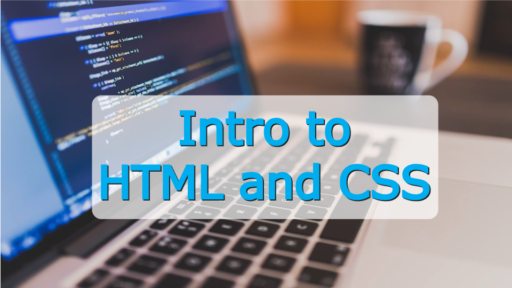HTML (Hypertext Markup Language)
HTML, or Hypertext Markup Language, is the standard markup language used to create and structure content on web pages. It consists of a series of elements, each surrounded by angle brackets (< >), which define the structure and semantics of the content. HTML elements can include headings, paragraphs, lists, links, images, forms, and more.
Key features of HTML include:
- Semantic Markup: HTML provides semantic meaning to content, allowing browsers and search engines to interpret the structure and purpose of different elements. This enhances accessibility and SEO (Search Engine Optimization) efforts.
- Document Structure: HTML documents are structured using elements such as <html>, <head>, and <body>, which define the overall structure of the page, metadata, and content.
- Hyperlinks: HTML enables the creation of hyperlinks using the <a> (anchor) element, allowing users to navigate between different pages and resources on the web.
- Forms: HTML includes form elements such as <input>, <textarea>, <select>, and <button>, which allow users to input data and interact with web pages.
Some key aspects of HTML designing:
- Semantic HTML: Semantic HTML refers to using HTML elements that convey the meaning and structure of content. Instead of focusing solely on visual presentation, semantic HTML emphasizes the purpose and context of elements. For example, using
<header>,<nav>,<main>,<article>,<section>,<aside>, and<footer>elements to define different parts of a web page. - Accessibility: Designing with accessibility in mind ensures that web content is usable by people with disabilities. HTML provides semantic elements and attributes that aid accessibility, such as alt text for images, labels for form elements, and ARIA (Accessible Rich Internet Applications) roles and attributes for enhancing accessibility in dynamic web content.
- Responsive Design: HTML plays a crucial role in creating responsive web designs that adapt to various devices and screen sizes. By structuring content with HTML elements and applying CSS media queries, designers can create layouts that adjust fluidly to different viewport sizes, improving the user experience across desktops, tablets, and mobile devices.
- Forms: HTML provides form elements for creating interactive web forms, allowing users to input data, submit information, and interact with web applications. Designing forms involves using HTML input types, labels, placeholders, validation attributes, and styling to create intuitive and user-friendly form experiences.
- Multimedia Integration: HTML supports multimedia content such as images, videos, audio files, and embedded content from external sources like YouTube or Vimeo. Designers can use HTML elements like
<img>,<video>,<audio>, and<iframe>to integrate multimedia content into web pages, enhancing engagement and visual appeal. - Structured Data: HTML can be used to mark up structured data using semantic elements and microformats like schema.org. Structured data helps search engines understand the content and context of web pages, potentially improving visibility in search engine results pages (SERPs) through rich snippets and enhanced search features.
- SEO (Search Engine Optimization): While HTML itself doesn’t directly impact search engine rankings, well-structured HTML code and semantic markup can indirectly benefit SEO efforts. Using descriptive titles, meta tags, heading hierarchy, and semantic markup can improve the accessibility, readability, and indexability of web content, contributing to better search engine visibility.
- Progressive Enhancement: HTML design principles often align with the concept of progressive enhancement, which involves starting with a solid foundation of semantic HTML and then layering on CSS and JavaScript enhancements to provide a richer user experience. By prioritizing content and functionality accessibility, progressive enhancement ensures that web designs are resilient and accessible across a wide range of devices and browsers.
CSS (Cascading Style Sheets)
CSS, or Cascading Style Sheets, is a stylesheet language used to control the visual presentation and layout of HTML documents. CSS defines styles such as colors, fonts, spacing, positioning, and more, allowing designers to customize the appearance of web pages. Key features of CSS include:
- Style Rules: CSS uses style rules to apply styles to HTML elements. Each rule consists of a selector (which targets one or more HTML elements) and a declaration block (which contains one or more style declarations).
- Selectors: CSS provides various types of selectors, such as element selectors, class selectors, ID selectors, attribute selectors, and pseudo-selectors, allowing for precise targeting of specific elements.
- Cascade and Specificity: CSS follows a cascade mechanism, where multiple style rules can apply to the same element. The specificity of selectors determines which styles take precedence in case of conflicts.
- Responsive Design: CSS supports responsive design principles, allowing designers to create layouts that adapt and respond to different screen sizes and devices using techniques such as media queries and flexible units. Some key aspects of CSS designing:
- Selectors and Declarations: CSS uses selectors to target HTML elements and declarations to specify the styles applied to those elements. Selectors can target elements based on their type, class, ID, attributes, and more. Declarations consist of a property (e.g., color, font-size) and a value (e.g., blue, 16px), defining how the selected elements should be styled.
- Box Model: The CSS box model describes the layout and sizing of elements on a web page. It consists of content, padding, border, and margin areas. By manipulating these box model properties, designers can control the spacing, borders, and dimensions of elements, creating visually appealing layouts.
- Layout Techniques: CSS offers various layout techniques for positioning and arranging elements on a web page. These techniques include float, position, flexbox, and grid layouts. Each layout method has its strengths and use cases, allowing designers to create responsive and adaptive designs tailored to different screen sizes and devices.
- Responsive Design: Responsive web design ensures that websites adapt fluidly to different viewport sizes and devices, providing a consistent and optimized user experience across desktops, tablets, and smartphones. CSS media queries are used to apply different styles based on factors such as screen width, orientation, and resolution, enabling designers to create flexible and adaptable layouts.
- Typography: CSS enables designers to customize the typography of web content, including fonts, font sizes, line heights, letter spacing, and text alignment. By selecting appropriate fonts and styling text effectively, designers can enhance readability, establish hierarchy, and convey the tone and personality of a website.
Conclusion
In conclusion, HTML (Hypertext Markup Language) and CSS (Cascading Style Sheets) form the foundation of modern web design, working together to create visually appealing, user-friendly, and accessible websites. HTML provides the structure and semantic markup for web content, while CSS controls the presentation, layout, and styling, allowing designers to customize the appearance of web pages across different devices and screen sizes.







